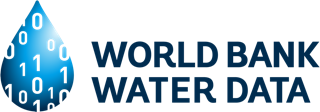In India, WSP's Global Scaling Up Rural Sanitation Program is supporting the Government of India's Total Sanitation Campaign (TSC) in two states: Himachal Pradesh and Madhya Pradesh. TSC is an ambitious countrywide, scaled-up rural sanitation program launched in 1999, which seeks to attain an Open-Defecation Free (ODF) India by 2012. In contrast to earlier, hardware-centric supply approaches to rural sanitation, TSC aims to generate demand for and adoption of improved sanitation at the community level. This impact evaluation aimed at better understanding what health and welfare impacts can be expected from rural sanitation improvements. Researchers hypothesized that promotion of rural sanitation through community-led total sanitation (CLTS) and social marketing campaigns will improve the health of the population especially children under five years old, a population that is vulnerable to unsafe disposal of feces in the environment and fecal-oral contamination. This impact evaluation consisted of baseline and endline surveys. In collaboration with the government of Madhya Pradesh, two districts Dhar and Khargone were selected. In each district, 80 Gram Panchayats were chosen and randomized into two groups: 1) treatment group (to participate in Total Sanitation Campaign immediately following the baseline survey) and 2) control group (to receive TSC after follow-up data collection). The baseline survey collected information from a representative sample of the population targeted by the intervention. This baseline survey was administered to approximately 2,000 households between June and July 2009. The survey provided information on the characteristics of household members, access to sanitation facilities, self-reported open defecation, prevalence of child diseases such as diarrhea and respiratory infection, and child growth and development. The endline survey was carried out in February-March 2011. It followed the same households sampled in baseline, as well as additional children to increase statistical power.


